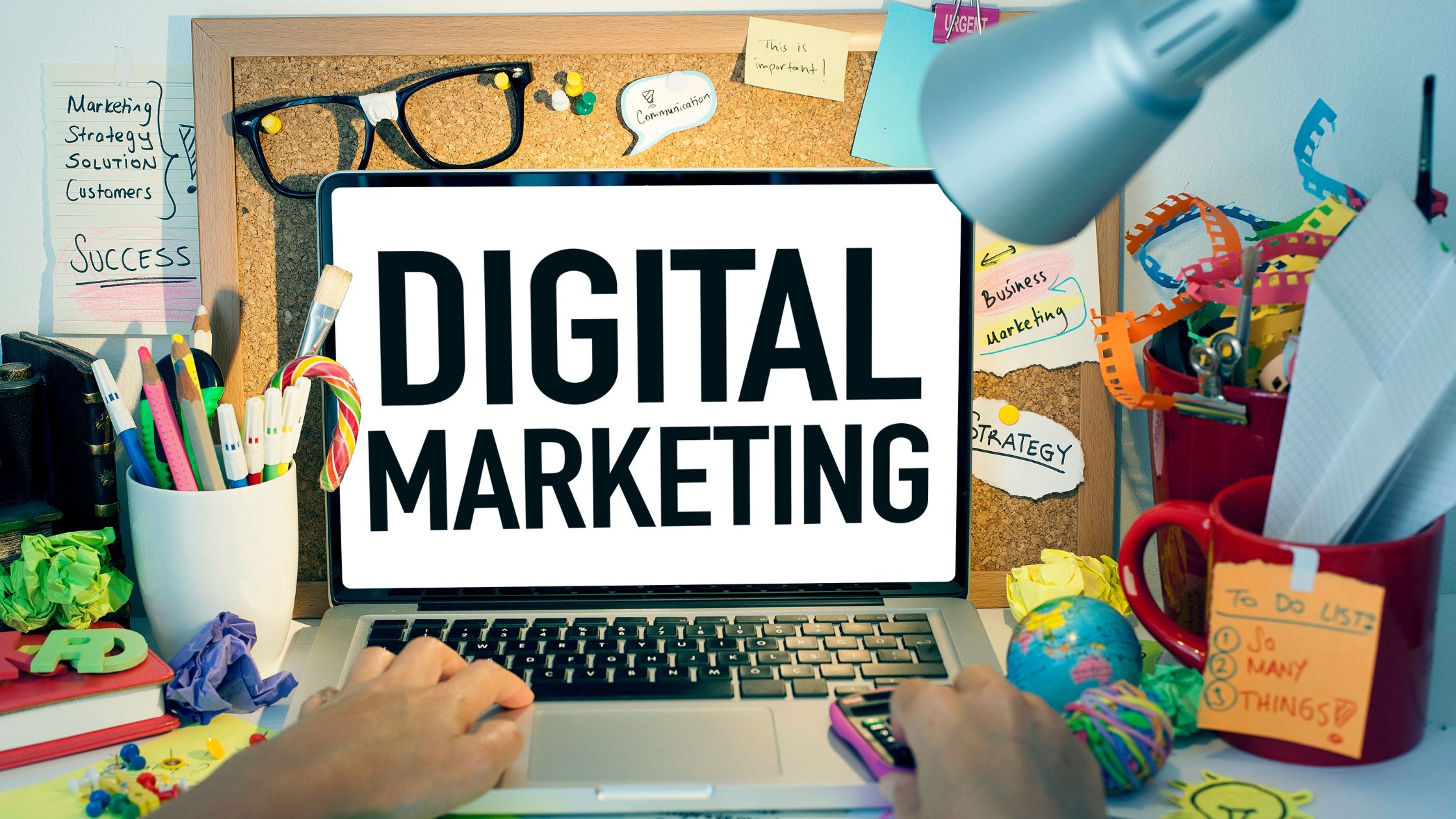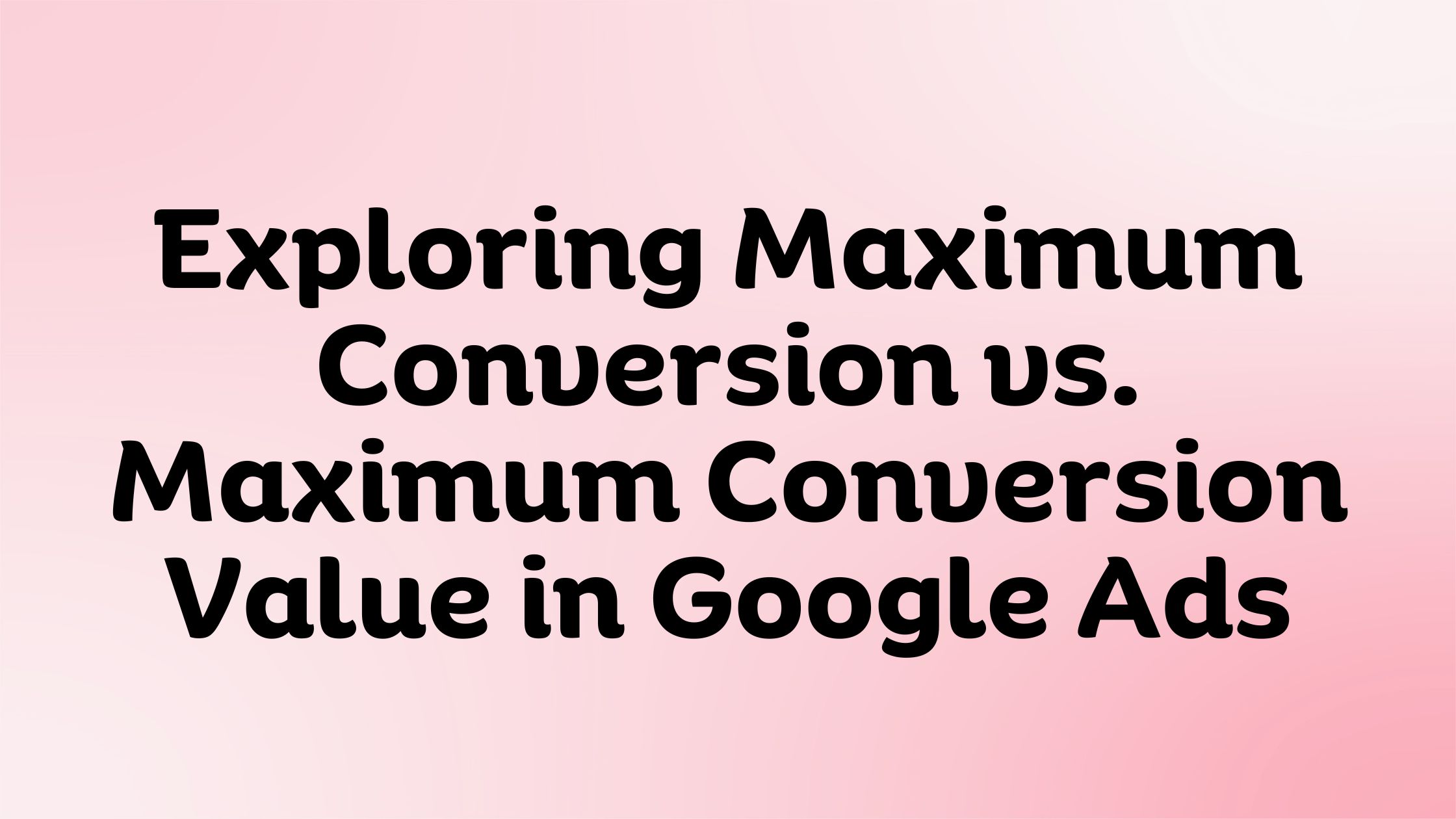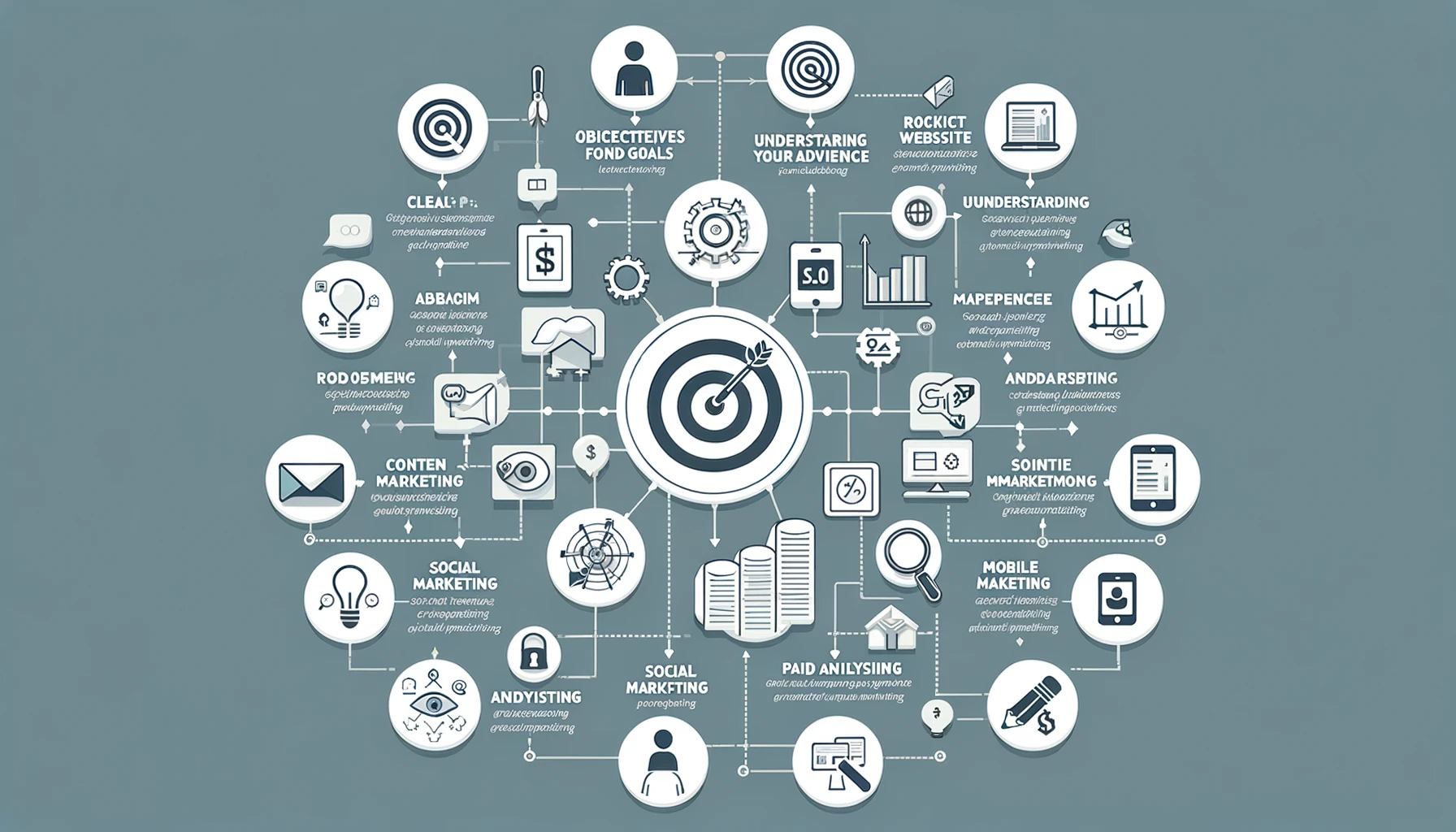As the digital marketing landscape continues to evolve, staying up-to-date with the latest terms and jargon is essential for any marketer or business owner. Our Digital Marketing Glossary List for 2023 is here to help you stay in the know. From new concepts to updates on established terms, this glossary will serve as your go-to resource for all things digital marketing.
- Conversational Marketing: Conversational marketing is a more personalized approach to marketing that focuses on engaging with customers through one-on-one conversations using chatbots, social media messaging, and other platforms. This form of marketing aims to create a more authentic connection between businesses and their customers by addressing their specific needs and concerns.
- Shoppable Content: Shoppable content is a form of interactive content that allows users to purchase products directly from images, videos, or other digital media. This type of content streamlines the buyer’s journey by minimizing the steps between discovering a product and making a purchase.
- Zero-Click Search: A zero-click search occurs when a search engine user finds the information they’re looking for directly on the search engine results page (SERP) without clicking on any links. As search engines become more advanced, optimizing content for zero-click searches has become increasingly important for marketers.
- First-Party Data: First-party data refers to information collected directly from a company’s customers, website visitors, or app users. This data is considered more valuable than third-party data because it comes straight from the source, making it more accurate and relevant for marketing purposes.
- Voice Commerce: Voice commerce is the use of voice-activated technologies, like smart speakers or virtual assistants, to facilitate online shopping. This trend has been on the rise, as more consumers adopt voice-enabled devices for their day-to-day activities.
- Cookieless Tracking: As privacy concerns grow and regulations change, cookieless tracking has emerged as a way to track user behavior on websites without relying on cookies. This tracking method uses alternative technologies, such as fingerprinting and server-side tracking, to gather data on user behavior.
- User-Generated Content (UGC): User-generated content (UGC) is any content created by a brand’s audience, such as photos, videos, or reviews. UGC is considered highly valuable in marketing, as it offers authentic, relatable perspectives that can be more persuasive than traditional advertising.
- Omnichannel Marketing: Omnichannel marketing is a strategy that seeks to provide a seamless and consistent customer experience across multiple channels, such as websites, social media, email, and physical stores. This approach aims to create a unified brand presence and foster better customer engagement.
- Micro-Influencers: Micro-influencers are social media users with a smaller, but highly engaged, following. They typically have between 1,000 and 100,000 followers and can be more cost-effective for brands looking to partner with influencers for marketing campaigns.
- Hyper-Personalization: Hyper-personalization is an advanced form of personalization that uses artificial intelligence (AI) and real-time data to create highly customized marketing experiences for individual users. This strategy allows businesses to tailor their marketing efforts to meet the unique needs and preferences of each customer.
- Customer Data Platform (CDP): A Customer Data Platform (CDP) is a software solution that centralizes and unifies customer data from multiple sources, allowing marketers to better understand their audience and create targeted marketing campaigns. This technology helps businesses to maintain a single customer view, which enables more personalized and effective marketing efforts.
- Augmented Reality (AR) Marketing: Augmented Reality (AR) Marketing is the use of AR technology to enhance or overlay digital content onto a user’s real-world environment. This innovative form of marketing offers an immersive and interactive experience, allowing brands to engage with customers in new and creative ways.
- Social Commerce: Social commerce is the practice of selling products directly through social media platforms. This approach allows businesses to take advantage of the social nature of these platforms, making it easier for users to discover, share, and purchase products.
- Sentiment Analysis: Sentiment analysis is the process of using AI and natural language processing (NLP) technologies to evaluate and interpret the emotions and opinions expressed in text data, such as social media posts or customer reviews. This information helps marketers to better understand their audience’s feelings toward their brand or specific products and adjust their strategies accordingly.
- Video Marketing: Video marketing is the use of video content to promote a brand, product, or service. This form of marketing has gained significant traction in recent years due to its ability to convey complex messages quickly and effectively while providing an engaging and easily shareable format.
- Programmatic Advertising: Programmatic advertising is the automated process of buying and selling digital ad space using advanced algorithms and real-time data. This approach streamlines the ad buying process and allows marketers to target their ads more precisely and efficiently.
- Content Atomization: Content atomization is the process of breaking down large pieces of content, such as blog posts or whitepapers, into smaller, easily digestible formats like infographics, social media posts, or short videos. This strategy helps businesses to maximize their content’s reach and extend its lifespan.
- Visual Search: Visual search is a technology that allows users to search for information using images instead of text. This innovative approach to search is gaining popularity, as it simplifies the search process and provides more accurate results for visually-oriented queries.
- Geofencing: Geofencing is a location-based marketing technique that uses GPS or RFID technology to define virtual boundaries around specific geographic areas. When a user enters or leaves the designated area, businesses can send targeted marketing messages, such as promotions or notifications, to their mobile devices.
- Neuromarketing: Neuromarketing is the study of how consumers’ brains respond to marketing stimuli, such as advertisements, product packaging, or store layouts. This field aims to provide insights into consumer behavior and decision-making processes, helping marketers to create more effective campaigns.
- Mobile-First Design: Mobile-first design is an approach to web design that prioritizes the user experience on mobile devices. This strategy ensures that websites are responsive and easy to navigate on smartphones and tablets, as more users access the internet primarily through these devices.
- Dark Social: Dark social refers to the sharing of content through private messaging channels, such as email, text messages, or direct messages on social media platforms. This type of social sharing can be challenging for marketers to track and measure, as it occurs outside of public channels.
- Contextual Advertising: Contextual advertising is a form of targeted advertising that displays ads based on the content of the webpage a user is viewing. This approach ensures that ads are relevant and complementary to the user’s interests, increasing the likelihood of engagement.
- Brand Storytelling: Brand storytelling is the art of crafting a narrative around a company’s values, mission, and unique selling propositions to create a compelling and memorable brand image. This approach helps to build an emotional connection between customers and the brand, fostering loyalty and trust.
- Account-Based Marketing (ABM): Account-Based Marketing (ABM) is a targeted marketing strategy that focuses on individual customer accounts or specific segments rather than the entire market. This approach allows businesses to create highly personalized marketing campaigns, which can lead to higher conversion rates and better customer relationships.
- Semantic Search: Semantic search is the process of improving search accuracy by understanding the searcher’s intent and the contextual meaning of the search query. This approach helps search engines deliver more relevant results, making it essential for marketers to optimize their content for semantic search.
- Multi-Touch Attribution: Multi-touch attribution is a marketing analytics method that tracks and assigns credit to multiple touchpoints along the customer journey. This approach helps marketers better understand the effectiveness of each marketing channel and adjust their strategies accordingly.
- Lookalike Audiences: Lookalike audiences are groups of people who share similar characteristics with a company’s existing customer base. Marketers can use this information to target their advertising efforts toward new prospects who are more likely to convert, based on their similarities to existing customers.
- Influencer Marketing: Influencer marketing is a promotional strategy that leverages the popularity and credibility of social media influencers to reach a wider audience. By partnering with influencers, brands can tap into their followers and increase their visibility, credibility, and trust.
- Dwell Time: Dwell time is a metric that measures the amount of time a user spends on a webpage before returning to the search engine results page (SERP). This metric is considered an indicator of the quality and relevance of a webpage, making it an essential factor for search engine optimization (SEO).
- Native Advertising: Native advertising is a form of paid advertising that blends seamlessly with the surrounding content, making it less intrusive and more engaging for users. Examples of native advertising include sponsored content, promoted social media posts, and in-feed ads.
- Progressive Web App (PWA): A Progressive Web App (PWA) is a web application that combines the best features of both mobile apps and websites, offering a fast, reliable, and engaging user experience. PWAs are increasingly popular as they can be accessed on various devices and platforms without requiring users to download an app.
- Growth Hacking: Growth hacking is a marketing approach that focuses on rapid experimentation and innovation to identify the most effective strategies for driving business growth. This method often involves leveraging digital channels, data analytics, and technology to achieve scalable and sustainable results.
- Marketing Automation: Marketing automation is the use of software tools and platforms to automate repetitive marketing tasks, such as email campaigns, social media posting, and lead nurturing. This technology helps businesses save time, increase efficiency, and personalize their marketing efforts.
- Click-Through Rate (CTR): Click-through rate (CTR) is a metric that measures the percentage of users who click on a specific link or ad, divided by the total number of impressions. This metric is commonly used to gauge the effectiveness of online advertising campaigns and email marketing efforts.
- Cross-Device Tracking: Cross-device tracking is the practice of collecting and analyzing user data across multiple devices, such as smartphones, tablets, and desktop computers. This method helps marketers better understand user behavior and create more cohesive and effective marketing campaigns.
- Content Curation: Content curation is the process of discovering, organizing, and sharing relevant and valuable content from various sources to engage and inform a target audience. This approach helps businesses provide their audience with fresh content, position themselves as industry thought leaders, and build relationships
- Retargeting: Retargeting is a digital marketing strategy that involves displaying ads to users who have previously interacted with a brand’s website, app, or products. This approach aims to re-engage potential customers and encourage them to complete a desired action, such as making a purchase or signing up for a newsletter.
- Social Listening: Social listening is the process of monitoring and analyzing social media conversations and mentions related to a brand, industry, or specific keywords. This practice helps businesses gain insights into their audience’s sentiments, preferences, and concerns, enabling them to make informed marketing decisions.
- Search Intent: Search intent is the underlying goal a user has when entering a query into a search engine. Understanding search intent is crucial for creating content that effectively addresses user needs and ranks well in search engine results.
- Interactive Content: Interactive content is any type of digital content that encourages user engagement through actions such as clicking, scrolling, or answering questions. Examples of interactive content include quizzes, polls, and interactive infographics. This type of content can increase user engagement and provide valuable insights into user preferences.
- Earned Media: Earned media refers to any publicity or exposure a brand receives organically, without any direct payment or advertising. This can include mentions in news articles, social media shares, or positive customer reviews. Earned media is valuable because it often carries more credibility and trust than paid advertising.
- Mobile Optimization: Mobile optimization is the process of ensuring a website or app performs well and provides a seamless user experience on mobile devices. This includes aspects such as responsive design, fast load times, and easy navigation.
- Data-Driven Marketing: Data-driven marketing is the practice of using data and analytics to inform and guide marketing decisions. This approach allows businesses to make more informed decisions, optimize their marketing efforts, and deliver personalized experiences to their customers.
- Cost Per Acquisition (CPA): Cost per acquisition (CPA) is a digital marketing metric that measures the total cost of acquiring a new customer, calculated by dividing the total marketing spend by the number of new customers acquired. This metric helps businesses evaluate the effectiveness and efficiency of their marketing efforts.
- A/B Testing: A/B testing, also known as split testing, is a method of comparing two versions of a webpage, ad, or other digital content to determine which version performs better. By measuring user engagement, conversion rates, or other relevant metrics, marketers can make data-driven decisions to optimize their content.
- User Experience (UX): User experience (UX) refers to the overall experience a user has when interacting with a product, service, or digital platform. UX encompasses aspects such as usability, accessibility, design, and functionality. A positive user experience is essential for building customer satisfaction and loyalty.
- Content Marketing: Content marketing is a strategic marketing approach focused on creating and distributing valuable, relevant, and consistent content to attract and engage a target audience. This type of marketing aims to establish a brand as an industry expert, build trust with customers, and ultimately drive profitable customer actions.
- Marketing Funnel: A marketing funnel is a model that represents the stages of a customer’s journey from initial awareness of a brand to the final purchase decision. The funnel typically includes stages such as awareness, consideration, conversion, and loyalty. Understanding the marketing funnel helps businesses create targeted strategies to guide customers through the buying process.
- Customer Lifetime Value (CLV): Customer Lifetime Value (CLV) is a metric that estimates the total revenue a business can expect from a single customer over the duration of their relationship. This metric helps businesses understand the long-term value of their customers and allocate resources effectively to maximize customer retention and profitability.
- Multivariate Testing: Multivariate testing is an advanced form of A/B testing that involves simultaneously testing multiple variations of different elements on a webpage or digital content. This approach allows marketers to identify the most effective combination of elements and optimize their content accordingly.
- Search Engine Marketing (SEM): Search Engine Marketing (SEM) is a digital marketing strategy that involves promoting websites by increasing their visibility in search engine results pages (SERPs) through paid advertising. SEM can include pay-per-click (PPC) advertising, display ads, and other forms of paid search initiatives.
- Customer Journey Mapping: Customer journey mapping is the process of creating a visual representation of the various stages and touchpoints a customer goes through when interacting with a brand. This map helps businesses identify areas for improvement and optimize the overall customer experience.
- Key Performance Indicator (KPI): A Key Performance Indicator (KPI) is a measurable value that demonstrates how effectively a company is achieving its key business objectives. KPIs are used by marketers to evaluate the success of their marketing efforts and make data-driven decisions for future campaigns.
- Bounce Rate: Bounce rate is a metric that measures the percentage of users who visit a webpage and leave without taking any further action, such as clicking on a link or filling out a form. A high bounce rate may indicate issues with a website’s usability, design, or content relevance.
- Conversion Rate Optimization (CRO): Conversion Rate Optimization (CRO) is the process of improving the performance of a website or digital content to increase the percentage of visitors who complete a desired action, such as making a purchase, signing up for a newsletter, or filling out a contact form. CRO involves analyzing user behavior, testing different elements, and implementing changes to improve conversion rates.
- Responsive Design: Responsive design is an approach to web design that ensures a website automatically adjusts its layout and elements to fit different screen sizes and devices, such as desktop computers, tablets, and smartphones. This design approach provides a consistent user experience across various devices, making it essential for modern websites.
- Social Media Optimization (SMO): Social Media Optimization (SMO) is the process of enhancing a brand’s social media presence to increase visibility, attract more followers, and drive engagement. SMO involves optimizing social media profiles, creating and sharing high-quality content, and engaging with users to build a strong online community.
- Google Analytics: Google Analytics is a free web analytics service offered by Google that provides detailed insights into website traffic, user behavior, and other essential data. This tool helps businesses understand how their audience interacts with their website, allowing them to make data-driven decisions to improve user experience and optimize marketing efforts.
- Exit-Intent Pop-up: An exit-intent pop-up is a website feature that displays a message or offer to users when they are about to leave the site. This can help businesses capture email addresses, offer discounts, or promote related content in a last-ditch effort to engage the user before they leave.
Conclusion
Staying informed and up-to-date on the latest digital marketing terminology is essential for businesses and marketers who want to stay competitive in today’s fast-paced digital landscape. This Digital Marketing Glossary List for 2023 serves as a valuable resource for expanding your knowledge and understanding of the ever-evolving world of digital marketing. Refer to this list whenever you need to refresh your memory or learn a new term, and watch your marketing efforts thrive.







